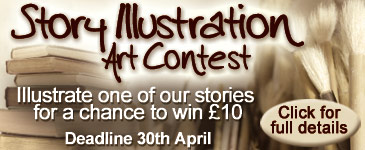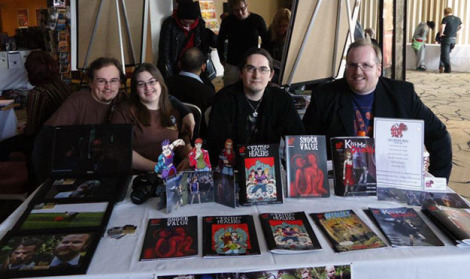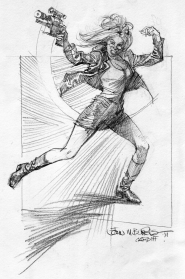Recent Posts
Categories
- Articles (19)
- Interviews (9)
- News (68)
- Reviews (5)
Archives
- October 2016 (1)
- July 2016 (1)
- May 2016 (1)
- April 2016 (2)
- March 2016 (2)
- February 2016 (3)
- October 2015 (3)
- September 2015 (5)
- August 2015 (7)
- July 2015 (9)
- June 2015 (10)
- May 2015 (10)
- April 2015 (11)
- March 2015 (6)
- September 2014 (1)
- July 2014 (1)
- March 2014 (1)
- June 2013 (2)
- May 2013 (3)
- April 2013 (3)
- March 2013 (3)
- February 2013 (1)
- December 2012 (3)
- November 2012 (4)
- October 2012 (6)
- September 2012 (5)
- August 2012 (1)
- June 2012 (1)
- May 2012 (3)
- April 2012 (1)
- March 2012 (4)
- February 2012 (2)
- January 2012 (3)
- November 2011 (2)
- October 2011 (4)
- September 2011 (2)
- August 2011 (4)
- July 2011 (1)
- June 2011 (2)
- May 2011 (1)
Tags
action adventure Anna Susanne books Bristol british horror Business Bear Carnival of Sorrows Christmas comedy comic comics competition Contest Faith Healers fantasy Feature Friday fiction film making flash fiction Follow Friday Gabriel Cushing hellbound media Horror humour indie film Kickstarter Mark Adams Matt Warner Nikki Foxrobot podcast Poetry publishing romance scary sci-fi short story supernatural The Flesh Angel thriller vampire web series writing zombies zombie vampiresSubscribe to Blog via Email
- Comic and story board artist Mike Ploog,
- John Higgins (Watchmen, Razorjack)
- Mick McMahon & John M Burns (Judge Dreadd, 2000AD)
- Illustrator Graham Bleathman
- Colin Baker (The 6th Dr Who)
- and many, many more.
Micro-fiction
Posted by Chrissey Harrison - 12th March 2012
I hope you all enjoyed the Ink Babe’s interview! One of the fiction formats they are including in their anthology is micro-fiction; short prose pieces with a story structure.
For those who haven’t come across micro-fiction before, here’s a bit about the format.
What makes micro-fiction different to flash fiction?
In some cases the terms micro-fiction and flash fiction are used interchangeably, but more often than not, micro-fiction is the extreme end of the flash fiction scale.
Flash fiction is commonly agreed to include anything under 1000 words in length; something shorter than the traditional short story that a reader can get through in a single five to ten minute sitting. Micro-fiction tries to create stories in just fifty or a hundred words.
Exact length limits to micro-fiction are a fuzzy concept. Some sites suggest anything up to 400 to 500 words is micro-fiction. Other’s say it must be less than 200, others less than 100.
Another term you may come across is “hyper-fiction.” This is sometimes used to refer to stories told in, for example, 140 characters (the length of a twitter message). But, it is also a term for fiction which uses hypertext links as a way of interacting with the reader; hypertext fiction, which can cause confusion.
What makes Micro-fiction different to Poetry?
Micro-fiction is prose. It does not have a verse structure, or rhythm of language like a poem, but it does have to obey all the grammatical rules of prose. Sentences must all be complete, speech must be properly punctuated with speech marks and so on.
Micro-fiction is also fiction. Where a poem can get away with painting a picture or describing a place, person or event, a fiction piece needs a plot. Therefore, even micro-fiction should tell a story with a beginning, a middle and an end.
What’s the point?
For readers, micro-fiction is an opportunity for a brief, intense encounter.
Some writers use it as an exercise to practice writing concisely or to capture a fleeting bit of inspiration that perhaps doesn’t lend itself to a longer piece of work.
One form of micro-fiction which is quite popular is the 50 word story which must be exactly fifty words in length. No more, no less. Tim Sevenhuysen is one pioneer of the format and runs FiftyWordStories.com, which features his stories and those by guest writers.
You might think that there’s no market for something so short, but there lots of micro-fiction anthologies out there. For example, Micro-fiction; an anthology of really short stories – Jerome Stern (ed). And, as the Ink Babes demonstrate, there is a place for micro-fiction alongside longer works in compilations with mixed formats.
There are also a lot of micro-fiction contests out there including small contests and give aways run by bloggers, so it’s a fun way to be creative, practice writing skills, discover new writers and network.
Want to read more about writing micro-fiction? Check out The Essentials of Microfiction by Camille Renshaw
Micro-fiction on The Great Escape.
This week we have a collection of 50 word stories by Chrissey Harrison for readers to enjoy.
If you’d like to see your micro-fiction on our site, send us a story under 100 words in length for a chance to be featured in our next micro-fiction collection.
Some of your submissions may also be offered the chance to appear in our first print anthology. See our submissions page for further details.
Tagged as: 50 word stories, fiction, flash fiction, micro fiction, story, submission call, submissions, writing
Categories: Articles, Blog
Leave a comment
An Interview With The Ink Babes
Posted by Chrissey Harrison - 9th March 2012
The world of publishing is experiencing change. New electronic media, lowering print costs, and print on demand services are bringing a new sense of freedom to a market previously dominated by publishing companies.
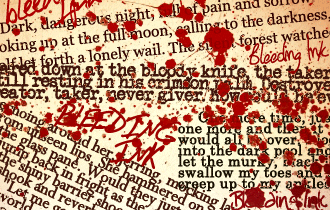 I had the pleasure of interviewing three authors who decided to embark on an adventure into these newly opened up waters. They are the Ink Babes, and they are putting together an anthology of dark and twisted tales; Bleeding Ink. They’re here to tell us a bit about the anthology and the experience of creating it.
I had the pleasure of interviewing three authors who decided to embark on an adventure into these newly opened up waters. They are the Ink Babes, and they are putting together an anthology of dark and twisted tales; Bleeding Ink. They’re here to tell us a bit about the anthology and the experience of creating it.
Chrissey Harrison: Can you tell us a bit about who the Ink Babes are?
Ink Babes: Separately we are Tammy Crosby, Lisa Forget and Patricia Hollett; together we are the Ink Babes; three women who wanted to find a way to bring together well written dark stories, flash fiction and poetry and turn it into an anthology for all to read. It was easy to join forces to share this endeavour, because of our passion for writing and reading. We not only work well together but we get along really well. That’s a huge plus when putting together something of this magnitude.
You can read more about the Ink Babes on their website under Who Are the Ink Babes?
CH: Bleeding Ink is a collection of dark, twisted tales. What made you choose this style and genre for the anthology?
IB: That’s easy, we’re all dark and twisted!
For starters we each write supernatural fiction, it’s what drew us together in the first place. Well that, and belonging to the same online writing forum, and our undying love for all things Kelley Armstrong. This genre was a natural fit.
CH: You accept submissions of short stories, flash fiction, micro-fiction and poetry. What made you choose to put such diverse formats together into one volume?
IB: The goal was to create something that would break up the pace of the anthology. In other words, we didn’t want all long stories, or short stories, but wanted to give readers a variety. We also wanted to give writers a venue to display their talent; some tell a story over tea, some tell a story in a blink. This anthology gives all their skills equal time to shine.
CH: Small scale publishing and self-publishing are growing in popularity and credibility. Do you think we’ll see more author driven publishing endeavours, like yours, in the future?
IB: We think the trend toward self-publishing is an ever-growing field, and more authors are pursuing that avenue. Self-publishing seemed the most natural fit for us as we’re trying something very different here with this anthology. It’s the best way to see how it will be received by the public so we can determine the market potential for future works. We are hopeful that it will be successful for all involved, especially for the contributors.
CH: What have been the biggest obstacles you’ve faced so far? Were they things you expected to be difficult?
IB: What we expected to be difficult? Nothing of course! How could reading all these great works possibly be work?
We didn’t expect it to be difficult when we first decided to take on this enormous task. There’s a lot more work involved than what anyone would guess.
Organization is paramount to making everything run smoothly. We’re lucky in that there are three of us so we divide the tasks evenly. We take turns doing a weekly blog post on our website to keep things interesting. Reading and evaluating the submissions takes much time and consideration, we discuss them between the three of us in order to make a fair and worthy decision.
The biggest obstacle is probably finding time for our own writing and personal life ‘stuff’.
CH: You must have received a lot of submissions. Do you feel you’ve learned something as authors by experiencing the submission process from the other side?
IB: Oh, absolutely! We’ve received quite a lot of submissions. Reading, assessing and deciding if they fit with our anthology theme takes time.
It’s really hard when you have to turn down a well written wonderful story because it doesn’t fully fit the profile or didn’t meet the guidelines. We feel for authors everywhere, after all we are them, but we also have a better appreciation for editors now as well. It’s a blessing to see both sides, one we highly recommend to others if you’re so inclined.
CH: What advice would you give writers who are considering submitting a piece to your anthology?
IB: Make sure your piece fits the guideline and theme of what you’re submitting to. Double check your grammar, punctuation and spelling before submitting to any publication.
Also, cut anything that doesn’t move your story forward. In other words, don’t include a lot of back story. These are short stories, flash fiction and poetry, and we believe people reading them want to get to the ‘blood and guts’ of the story. The quicker the better. Start with the action, hook the reader and end it with a ‘poignant pause’. Make everyone remember your words.
CH: Where will people be able to buy the Bleeding Ink anthology and when will it be released?
IB: We are targeting a cut-off date for submissions of March 31, 2012, and at that point we are hoping to schedule our editing and decide on a release date. We will update our website with all the pertinent details as they become available.
CH: And lastly, tell us why you think people should read the anthology.
IB: Our hearts are set on making Bleeding Ink something that will intrigue our readers. Something that will stay with them and make them want to tell all their friends about it. And, if we’re lucky, make them ask for more.
We hope the quality of the anthology speaks to the talent of the writers, and the hearts of our readers.
IB: We’d like to thank Chrissey for taking the time to interview us for The Great Escape, and for your interest in our anthology. It’s been a pleasure answering your questions and we hope your readers enjoy the interview and find the time to visit our website.
Submissions to Bleeding Ink are open until 31st March. You can find all the details, plus more about the Ink Babes and entertaining weekly blog posts at bleedinginkanthology.wordpress.com
Tagged as: anthology, Bleeding Ink, dark, fiction, Horror, Ink Babes, Lisa Forget, open submission, paranormal, Pat Hollett, publishing, self-publishing, supernatural, suspense, Tammy Crosby, twisted, writers, writing
Categories: Blog, Interviews
5 Comments
Announcing our Story Illustration Art Contest
Posted by Chrissey Harrison - 6th March 2012
Our recent short story contest have been a great success. Now we want to try something different.
We’d like to see what all you artists out there can do in an illustration competition. Choose any of the stories or poems previously published on the site and send us an image you feel captures the spirit of the story.
Besides a nice little cash/voucher prize for the winner, we’ll be selecting a handful of the best entries for inclusion in our first print anthology. Check out the Competitons page for all the details.
Tagged as: art, competition, Contest, drawing, fiction, illustration, images, painting, photography, prizes, stories, submissions
Categories: Blog, News
1 Comment
Looking back to Cardiff Comic Expo
Posted by Chrissey Harrison - 4th March 2012
Last weekend The Great Escape and Hellbound Media attended Cardiff Comic Expo.
Hellbound’s comics were very popular with the Cardiff crowd, selling more copies than at any other convention. If you were one of those people of excellent taste who picked up a copy of Faith Healers, Kiss Me Deadly or Shock Value, pop by and let us know what you think.
The atmosphere at the expo was one of creativity and encouragement. Many comic artists sat at their tables creating beautiful custom pieces for people. Matt Warner commissioned a sketch of his character Dawn from Kiss Me Deadly by artist John M Burns, and others by Gary Erskine, Kat Nicholson and Jason Cardy. Check out Hellbound’s Facebook Page to see the rest of the images.
Writers with novels sat alongside merchandise stalls and comic booths, with no sense of being out of place. I had the pleasure of chatting with Wayne Simmons (author of Belfast zombie horror novels Flu, Fever and Drop Dead Gorgeous) and Adam Millard (writer of zombie horror novels Dead Cells and Dead Frost).
Simmons contrasted the welcoming, energetic style of the convention with literary conventions where competition rather than camaraderie can sometimes prevail.
University of Wales, Newport and Swansea University both had a strong presence with students from their creative programmes showing off their latest projects. One film animation project rang bells with us as it had previously been featured at one of Bristol based CineMe’s film showcase events.
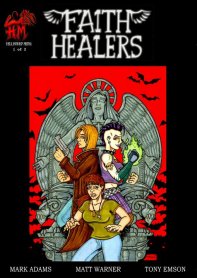 Although we were largely tied up manning our little patch, Rich and I did sneak away to attend one panel discussion on the nature and future of the horror genre where we met publisher Emma Burns of Snow Books and writer Robin Furth, who works alongside Steven King on the Dark Tower comic series. There is a related discussion topic in the forum.
Although we were largely tied up manning our little patch, Rich and I did sneak away to attend one panel discussion on the nature and future of the horror genre where we met publisher Emma Burns of Snow Books and writer Robin Furth, who works alongside Steven King on the Dark Tower comic series. There is a related discussion topic in the forum.
If you’ve not been to a comic expo or convention before, consider picking up tickets for the next one near you. Even if you don’t consider yourself a comic book fan, you’ll find a wealth of exciting things to try out.
Hellbound Media will next be appearing at the Bristol Comic Expo on 12th-13th May 2012, where Faith Healers artist Tony Emson will be signing and sketching.
Tagged as: Adam Millard, art, artists, authors, books, Bristol comic expo, CineMe, comic expo, comics, convention, events, Gary Erskine, hellbound media, indie, Jason Cardy, John M Burns, Kat Nichols, photos, Robiun Furth, small press, Snow Books, Wayne Simmons, writers
Categories: Blog, News
Leave a comment
TGE and Hellbound Media at Cardiff Comic Expo
Posted by Chrissey Harrison - 21st February 2012
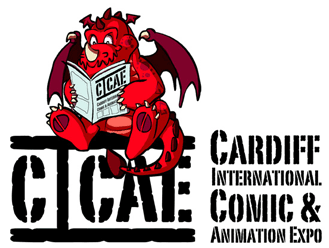 This weekend it’s the Cardiff International Comic and Animation Expo (CICAE). It will be the first time Hellbound Media have appeared at the convention and the Great Escape is tagging along to help out.
This weekend it’s the Cardiff International Comic and Animation Expo (CICAE). It will be the first time Hellbound Media have appeared at the convention and the Great Escape is tagging along to help out.
Whether you’ve already got your ticket or you’re hoping to pick one up on the day, we’re looking forward to seeing you. Dig out your best cosplay outfit, bring your books and comics for signing and come get your geek on at the biggest comic event in the Cardiff calendar.
Special guests at this year’s event include:
Hellbound Media will be joining a host of other comic vendors in the small press section of the convention. They’ll also be launching the concluding second parts to Faith Healers and Kiss Me Deadly. Check out their Facebook page for more info and updates. You can read a taster of Kiss Me Deadly part 1 here on The Great Escape:
Chrissey and Rich from The Great Escape will be joining Mark Adams and Matt Warner on the stall. We hope some of you will come along and say hi.
Tagged as: Cardiff, comic convention, comic expo, comicon, comics, convention, events, hellbound media
Categories: Blog, News
1 Comment
Valentine’s Writing Contest Winners
Posted by Rich - 14th February 2012
Our Valentine’s writing competition was a great success with a whole load of great entries. Many thanks to everyone who took part, the quality was really high and you made it very difficult to judge. However, there can only be one winner:
Congratulations to Matt Fewford, author of Paths, our winning contest entry.
 Paths by Matt Fewford
Paths by Matt Fewford
Arrows are for amateurs
Congratulations also to our two runners up, Andrew Campbell-Kearsley, author of Poetry in my Pigeon Hole and Sophie Jackson, author of Romance in White Gowns.
 Poetry in my Pigeon Hole by Andrew Campbell-Kearsey
Poetry in my Pigeon Hole by Andrew Campbell-Kearsey
A school headmaster receives a surprise in his pigeon hole one morning. But who could it be from?
 Romance in White Gowns by Sophie Jackson
Romance in White Gowns by Sophie Jackson
Recovering in hospital after a motorcycle accident, Stephanie meets a charming stranger.
Tagged as: announcement, Contest, fiction, news, romance, short stories, valentine's day, winners
Categories: Blog, News
Leave a comment
Post Christmas Goodies
Posted by Chrissey Harrison - 9th January 2012
This week, check out a little collection of late Christmas gifts.
Christmas Writing Contest Runners-up:
 A Voice of Reason by Stephanie Laine
A Voice of Reason by Stephanie Laine
One old lady sets her sights on a life of luxury in this dark psychological thriller.
 The Christmas Tights by Sabine Naus
The Christmas Tights by Sabine Naus
Young Daphne comes up with a clever plan to get more than her fair share from Santa. Sweet family fun.
Bonus Comic:
 The Final Zone – Get in the box!
The Final Zone – Get in the box!
When is it more fun to play with the box than with the present?
Next week we’ll be returning to our normal update schedule with the first installment of a post-apocalyptic young adult adventure story from Chrissey.
Tagged as: bonus, Christmas, comic, Contest, contest runners up, schedule, stories, story
Categories: Blog, News
Leave a comment
Valentine’s Writing Competition
Posted by Chrissey Harrison - 5th January 2012
It’s time for another writing competition. This time we’re looking for romance.
Send us a short, romantic story (1,500 words) including a spilled drink and a case of mistaken identity for your chance to win £10 Amazon vouchers or cash via PayPal.
For full details and how to enter, see our competitions page.
Deadline – Monday 6th February 2012.
Tagged as: competition, Contest, prizes, romance, short story, valentine's, valentine's day, writing
Categories: Blog, News
Leave a comment
Happy New Year
Posted by Chrissey Harrison - 4th January 2012
Did everyone have a good Christmas with way too much food and drink? We certainly did.
You may have noticed the site has been a bit quiet over the holiday period but now we’re ready to jump feet first into 2012.
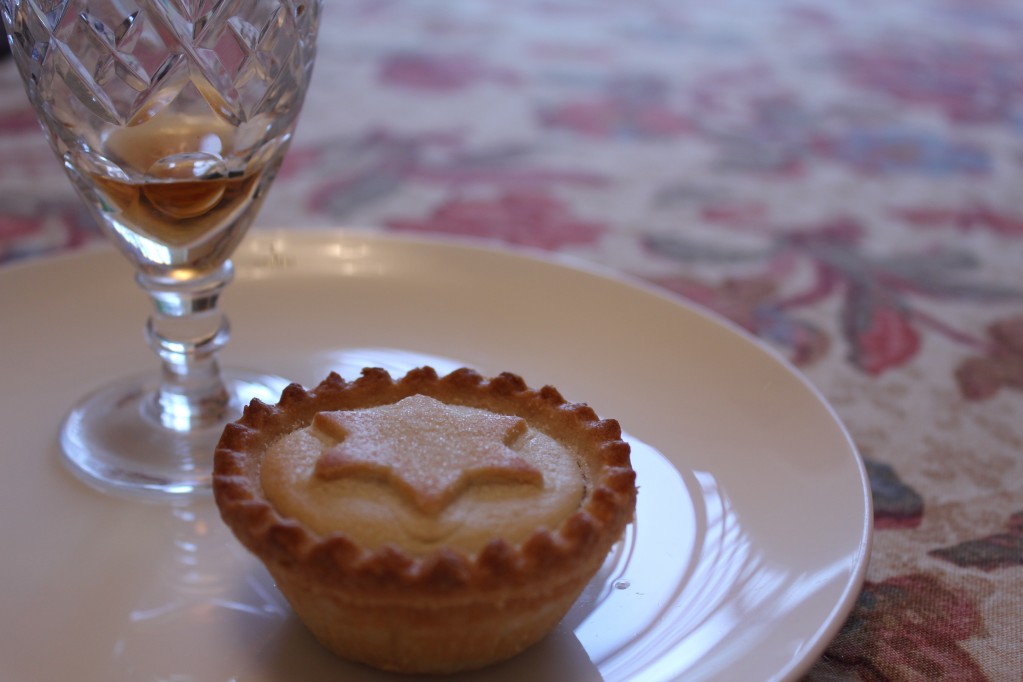 To kick off the year, we’ll be bringing you a bag full of late Christmas gifts, with runner up entries from our Christmas writing competition and a seasonal Final Zone comic from FinalBeyond.
To kick off the year, we’ll be bringing you a bag full of late Christmas gifts, with runner up entries from our Christmas writing competition and a seasonal Final Zone comic from FinalBeyond.
And of course, once the Christmas left overs are used up, January is the time for making resolutions and planning the year ahead… assuming the world doesn’t end of course.
Our New Year’s resolutions for 2012
1. Get ahead of ourselves.
When we launched the site back in May 2011, we weren’t really sure how everything was going to work, and consequently we missed the deadlines we set ourselves all over the place. This year we’re really going to focus on getting ahead of the game so we can advertise what’s coming up before we add it to the site.
2. More, more, more!
We love content, and hopefully you do too, this year we want to bring you more of it. Look out for extra comic and fiction posts this spring and additional video posts later in the year.
3. So many voices.
You may not know this, but some of the people involved in the Great Escape have sites of their own or blogs where they share even more great news, ideas and content. This spring we’ll be bringing you a new section with links to our favourite places on the big wide web.
4. Lose some weight.
Everyone says that in the New Year. In our case we’ll be slimming down the site by moving the information on the wiki into the main site.
5. Get more engaged.
Our first writing contest went really well and you can look forward to more chances to get involved this year. We’ll be hosting more contests, prize give-aways and opportunities in all three content sections, starting this Friday with our next writing contest.
We hope you’ll all keep stopping by to see what’s new, and don’t forget to check out the forum where you can find discussions and all sorts of useful resources and posts.
Tagged as: changes, Christmas, comics, contests, fiction, forum, New Year, resolution, schedule, update, wiki
Categories: Blog, News
Leave a comment
Chrissey’s writing tips #4
Posted by Chrissey Harrison - 28th November 2011
BEGINNING, MIDDLE AND END – Standard plotting
I’ve not done a post yet about standard plotting because it is something you can read about in many places. I’ve always found it easier to understand something if I know why I’m doing it, so I’d rather discuss the ideas behind good writing in terms of what you are trying to achieve than simply prescribing what to do.
Here are some links to places you can read about plotting:
Three Act Plot Structure – A basic introduction to the three act structure and links to more advice.
Elements of a Novel – Structure and Plot – This article has some good emphasis on character conflict and the relationship between plot and character, plus some good diagrams if you like visual aids.
Classic story structure begins with plot – Adam Sexton – A look at plotting in a slightly different way as an alternative to the three act structure concept.
Story Structure Architect – Victoria Lynn Schmidt – A thorough look at plot structure and all the many devices you can use. (Also available for Kindle)
Plus everyone will tell you to read Stephen King’s On Writing. I’ve not read it yet, but I think I will have to eventually to see what everyone is talking about, like I did with Twilight.
KEEPING THE PAGES TURNING – Pace and Tension
Last time I looked at how to engage a reader with the opening of your story. Once you have your reader hooked you need to keep them immersed and invested in the story to keep them turning the pages.
STAKES
Imagine your story is a casino. Your goal is to give your readers a gambling addiction. It is important to establish the value of the prize – the main character’s goal – and the price of failing to win it – the stakes.
Once again it comes back to immersion and believability. If your characters are going to struggle through adversity and setbacks in pursuit of their goal then the reader needs to find it believable that they would go to all that trouble. As soon as the reader starts wondering why the character is bothering to put themselves through hell, you’ve lost them.
Firstly the goal must be worth the risk. You want your readers to identify with the character and want them to succeed. The goal could be anything from getting the girl to saving the world, so long as the readers want it too.
Secondly the stakes should motivate the character to try. Failure should have consequences which make the reader cringe, laugh or cry. The prize should never seem completely out of reach though, otherwise what’s the point of trying again?
Like a gambler at the blackjack table, you want each setback only to encourage the reader to bet more on the next hand in the hopes of winning big.
PRECIDENT
Establishing the stakes gives your story tension. But, how do you establish the stakes? You don’t want to undermine the impact of your scenes by explaining everything that is going to happen before it happens, but dropping hints and laying groundwork creates a sense of anticipation in the reader. This is a matter of establishing precedent for future events.
Precedent can be subtle, so subtle you might not even know it was there. It might be built into the character or the setting. Resist the urge to keep returning to it. If the stakes are sufficiently high, once you establish them they will stay in the reader’s mind.
The other important reason for establishing precedent is, you guessed it, believability. If solutions to setbacks appear without warning you make the reader think you’re cheating; just making up unlikely things to suit you. By building in precedent it is possible to make the arrival of the totally unexpected seem totally plausible.
PACE
Pace is a tricky thing to define. In an effort to put it simply, it’s about the speed of the flow of events. But this is more than just how many hours or days the events take place over, it’s about how much time/detail you spend on each moment, how continuous your narrative is, the language you use, and how you use that pace to create emotional responses in your reader.
It’s a complicated subject to say the least, but some general approaches are quite straight forward. As with the previous post about scenes and narrative summary, the pace of your story should work to focus on the elements that are important to the plot.
 The pace does not need to be constant, but wild changes in a short period of time can feel quite jarring. This may in some cases be an effect you want to use on purpose, but you should be aware of doing it unintentionally.
The pace does not need to be constant, but wild changes in a short period of time can feel quite jarring. This may in some cases be an effect you want to use on purpose, but you should be aware of doing it unintentionally.
Pace is not linked to the number of words on the page and only partially linked to the time and events covered in those words. Three pages of narrative summary covering a couple of weeks of events will feel slow to the reader compared to three pages of scene covering a few minutes. Meanwhile a sedate conversation will feel slow compared to a frantic action scene even if the two cover the same length of time in the same amount of words. The same scene with more descriptive detail will feel slower than if you focus on the actions.
Pace should ebb and flow to keep the reader turning the pages. You never want them to get bored or start skipping pages so you should be mindful of the length of your slower paced sections. Equally, if every second of the story is set at a frantic pace they may start to question how your characters have the energy. Consider slowing the pace down from time to time to keep the story believable.
Image credits – Click individual images.
Tagged as: creative writing, fiction, pace, plot, plotting, precedent, stakes, story, storytelling, structure, tension, writing, writing advice, writing tips
Categories: Articles, Blog
3 Comments
Books | Submissions | Hall Of Awesome | Mailing List | About us | Cookies Policy | Contact us | RSS (Atom) |










